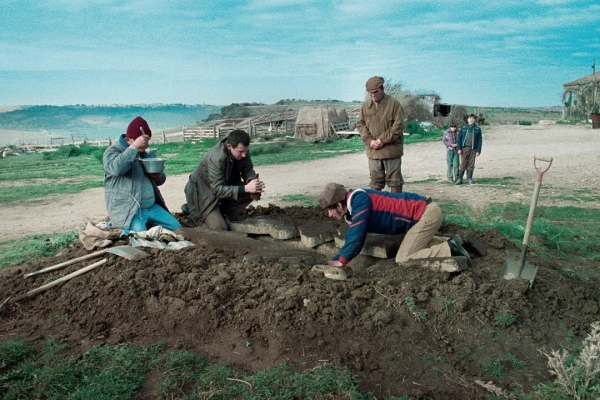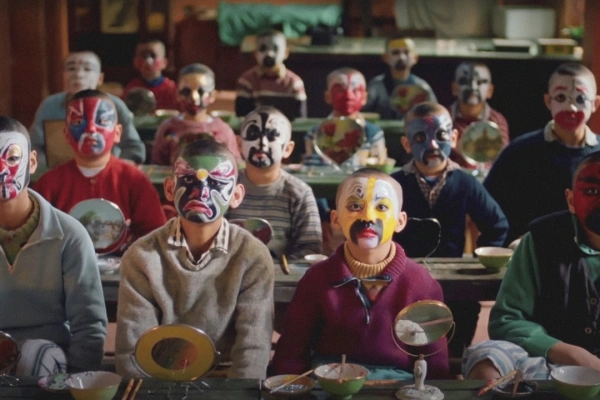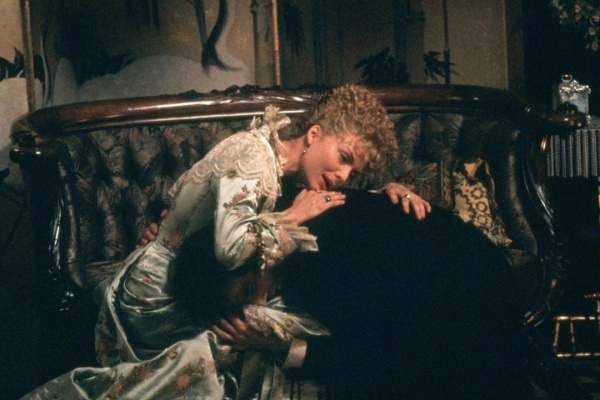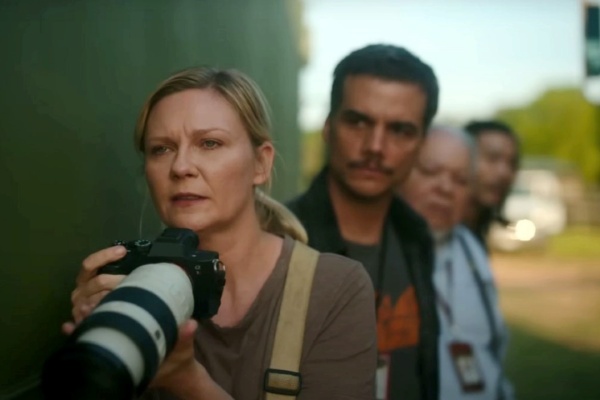A Holocaust film shot with confronting immediacy in what is possibly one of the most shattering and intense of screen experiences in recent memory.
Dir. Laszlo Nemes
2015 | Hungary | Drama/War | 107 mins | 1.37:1 | Hungarian, Yiddish & German
M18 (passed clean) for disturbing violent content, and some graphic nudity
Cast: Geza Rohrig, Levente Molnar, Urs Rechn
Plot: In the horror of 1944 Auschwitz, a prisoner forced to burn the corpses of his own people finds moral survival upon trying to salvage from the flames the body of a boy he takes for his son.
Awards: Won Grand Jury Prize (Cannes). Won 1 Oscar – Best Foreign Language Feature.
International Sales: Films Distribution
Accessibility Index
Subject Matter: Mature/Disturbing
Narrative Style: Complex
Pace: Normal
Audience Type: General Arthouse

(Reviewed at The Projector – first published 1 Mar 2016)
Spoilers: No
Son of Saul is the best film of the year. I have not seen something as intense and shattering as Laszlo Nemes’ feature debut for a long time. Winning the Grand Jury Prize at the Cannes Film Festival, Son of Saul ought to have won the Palme d’Or over Dheepan (2015), but at least the former now has an Oscar in its belt.
It is a Holocaust picture unlike any before it. Comparisons will be made to such works as Schindler’s List (1993) or The Pianist (2002), but such comparisons do not yield any more insight than pitting an autobiography against a graphic novel. Nemes’ work here far exceeds what can be done with the subject matter, turning it into something that will haunt you for many days.
“You failed the living for the dead.”
“We are dead already.”
We meet Geza Rohrig’s character, Saul, from the get-go as he walks towards the camera into focus. From then on, he is framed in a loose close-up with shallow depth of field throughout the entire film. We see him up-close, and we experience his limited vision. After all, he is a Sonderkommando; he cannot afford to be overtly curious. He does what he is told – anything less or more will cost him his life.
As we learn, Sonderkommandos are Jews forced to work with the Nazis to assist in executing their own race. This is a narrative that is rarely afforded the big screen treatment (some more high-profile ones include the Oscar-winning documentary The Last Days (1998) and the dramatized The Grey Zone (2001)), let alone envisioned from the vantage point of one person’s subjective experience of hell on earth.
Son of Saul centers on Saul’s obsession with finding a Yiddish rabbi to give a particular dead boy, whom he thinks is his son, a proper religious burial. This is a man so afflicted by severe trauma that he believes in providing for the dead more than fighting for his own, and his peers’, survival. Nemes’ film is also about a discreetly planned uprising by the Sonderkommandos, who know that their days are numbered.
Director Laszlo Nemes cited Elem Klimov’s “Come and See” (1985) as an inspiration for his film.
The intention is to bring both narrative threads together and set them against the film’s rigourous aesthetic, one that depicts with confronting immediacy the dehumanizing ‘journey’ of executing thousands of people – we follow the fated as they disembark from cattle trains, rushed into the gas chambers, before their lifeless bodies are burned in the crematorium. Their ashes are then dumped into a nearby river.
Nemes’ masterstroke is the use of sound to amplify the film’s limited visual scope. We hear much more than we can see, and this audio-sensory approach gives Son of Saul its haunting power and unique clarity on historicity. The prologue is a masterful example of this technique, and it continues until the final frame. By then, you will be completely floored.
In 1955, we had Alain Resnais’ chilling documentary short Night and Fog that revealed archival footage and stills taken in the concentration camps. 30 years later, Claude Lanzmann’s hugely important Shoah (1985) expanded the conversation in a 9 ½ hour documentary without a single archival footage or photo.
Now 30 years later, Son of Saul’s release is timely – as the Holocaust becomes more distant with each passing year, Nemes’ film jolts us all awake again.
Grade: A+
Trailer:












[…] anyone who has seen Son of Saul (2015), Laszlo Nemes’ astounding first feature film, surely the expectations would have been […]
LikeLike
[…] existence (much like how Laszlo Nemes did so to similar nauseating effect in 2015’s Son of Saul), yet her determination and courage to face life’s difficulties also hearten us in the […]
LikeLike
[…] or visceral modern-day Holocaust films like Schindler’s List (1993), The Pianist (2002) or Son of Saul (2015), but its unique women-focused story and the sheer context of its production lend it the […]
LikeLike
[…] Son of Saul (2015) brought relentless, claustrophobic intensity to concentration camp dramas by being entirely […]
LikeLike